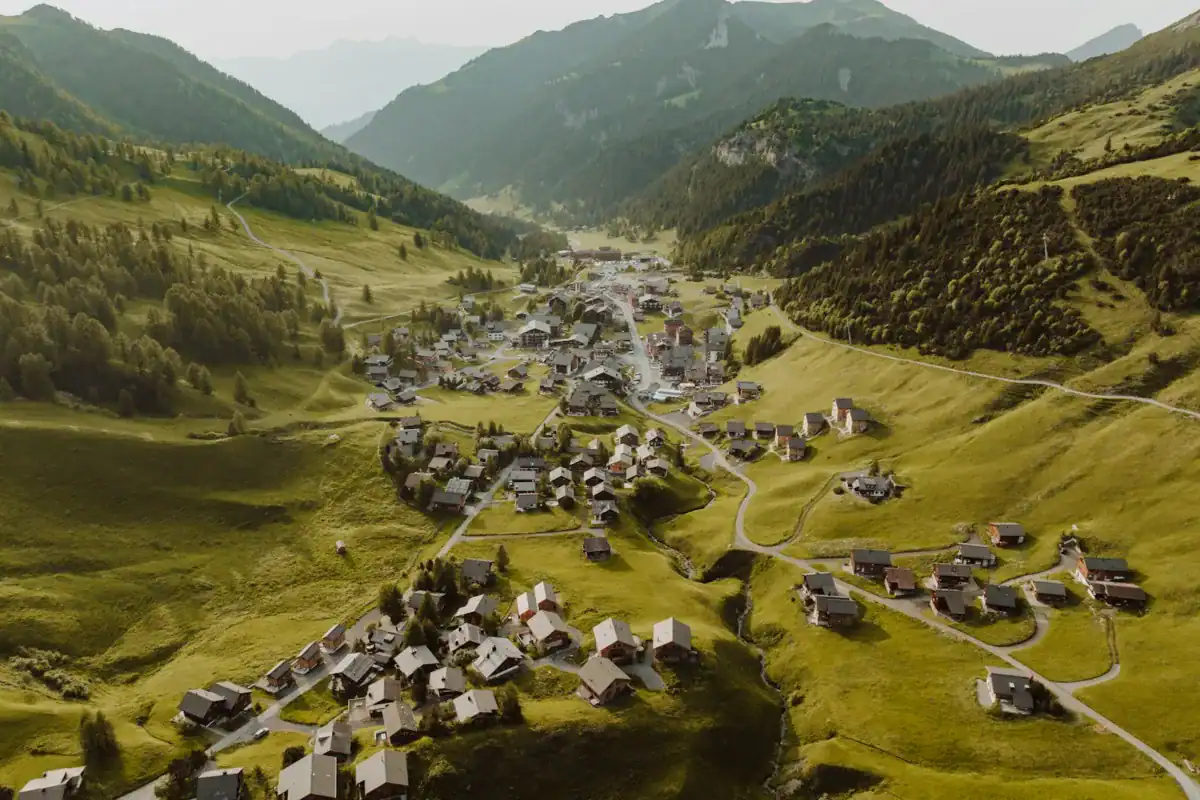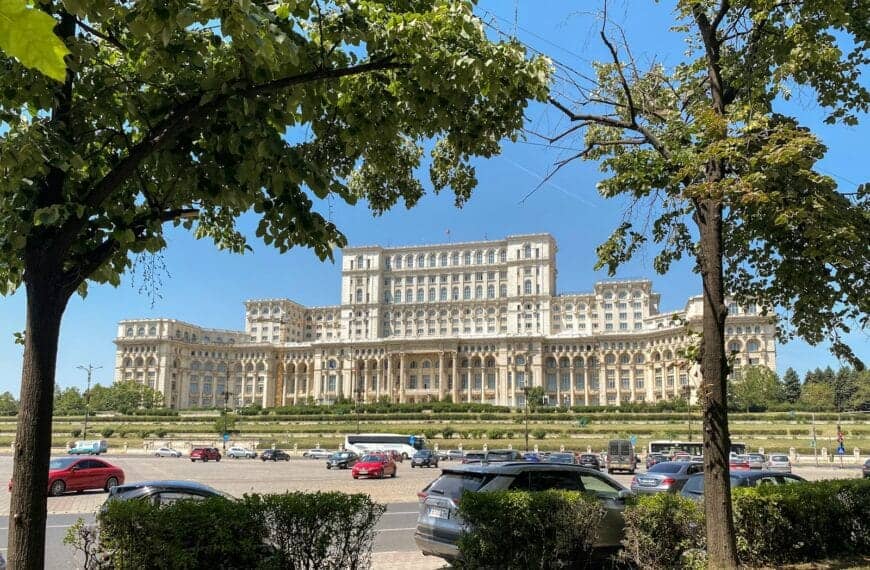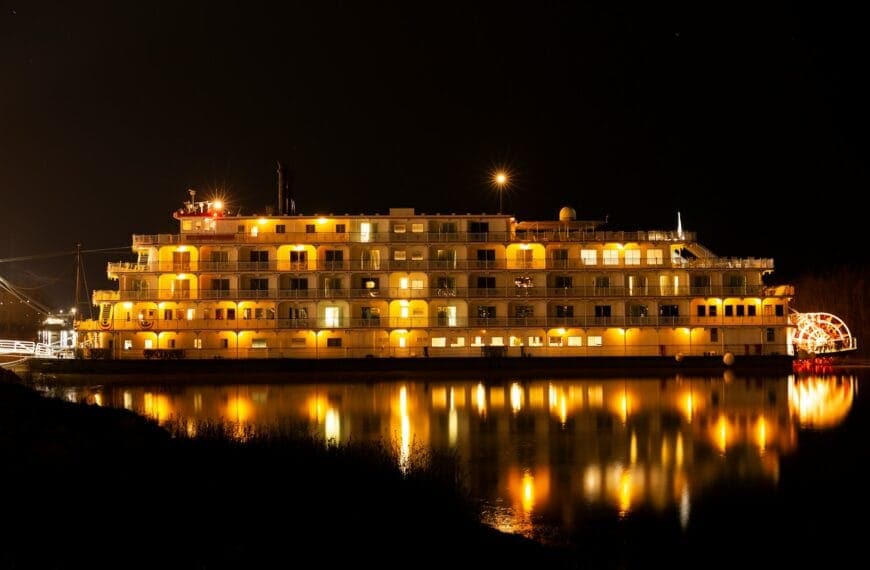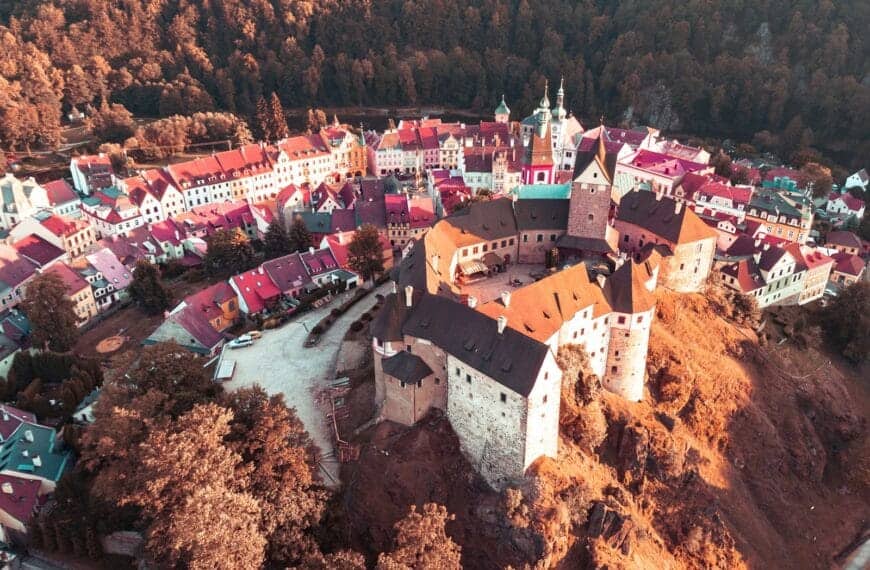Liechtenstein Travel Guide: Castles, Alps & Timeless Charm
Intro to Liechtenstein Travel Guide
Wedged between Switzerland and Austria, the tiny principality of Liechtenstein feels like a storybook kingdom brought to life. At just 160 square kilometers, it’s one of the smallest countries in the world, but don’t be fooled by its size. Jagged Alpine ridges rise dramatically over green valleys, medieval castles crown hilltops, and vineyard rows stretch along the Rhine. Whether you’re wandering through the capital of Vaduz, hiking alpine trails above Malbun, or tracing Walser heritage in Triesenberg, Liechtenstein delivers a mix of culture and mountain adventure that few destinations match.
It’s a country where you can ski in the morning, tour art museums in the afternoon, and end the day with a glass of local Pinot Noir as the sun sets behind the Alps. Start planning your journey with our Liechtenstein Travel Guide — and discover how guided tours can bring the principality’s castles, peaks, and culture to life.
Municipalities to Explore in Liechtenstein
Balzers | Eschen | Gamprin | Mauren | Planken | Ruggell | Schaan | Schellenberg | Triesen | Triesenberg | Vaduz
💡Quick Facts:
Destination: Liechtenstein
Continent: Europe
Country: Liechtenstein
Area: 62 mi² (160 km²)
Population: ~39,000
Capital: Vaduz
Regions: Oberland (Upper Country), Unterland (Lower Country)
Official Language: German
Regional Languages: Alemannic dialects
Currency: Swiss Franc (CHF)
Time Zone: Central European Time (CET), UTC +1; Daylight Saving Time observed
Climate: Continental with cold winters, mild summers, and alpine conditions in higher elevations
Known For: Alpine landscapes, medieval castles, Vaduz art and cultural museums, tax haven status, Rhine River Valley
🛂Arrival Info:
Entry Requirements: Part of the Schengen Area. EU/EEA/Swiss citizens require only an ID or passport. Non-EU travelers may need a Schengen visa for short stays (up to 90 days in a 180-day period).
Visa Information: Government of Liechtenstein – Entry and Visa Information
Nearest Airports: Zurich Airport (ZRH, Switzerland) and Altenrhein Airport (ACH, Switzerland). Liechtenstein has no international airport.
Access Points: Entry mainly by road or rail from Switzerland or Austria.
Required Documents: Passport valid at least 3 months beyond stay; onward or return ticket may be requested for non-EU nationals.
🏥Health Info:
Vaccines: No mandatory vaccines required; routine European immunizations recommended.
Healthcare Access: Modern healthcare system with hospitals in nearby Switzerland; Vaduz has medical clinics.
Emergency Care: Ambulance and emergency services coordinated with Switzerland.
Risks: Mountain hiking and skiing carry risks; proper equipment and insurance recommended.
🚑 Check travel insurance options for travel emergencies, delays, and medical needs abroad — Get coverage here
💉 Stay Informed with Official Updates: WHO – International Travel & Health | CDC – Travel health updates
🚨Travel Advisory:
Safety Level: Very safe destination with one of the lowest crime rates in the world.
Crime Risks: Minimal; occasional petty theft possible in tourist areas.
Road Safety: Roads are well-maintained but narrow in alpine regions; winter driving may require snow chains.
Natural Risks: Avalanches in winter; rapid weather changes in mountains.
🌍Track Real-Time Official Updates: US Travel Advisory | UK Foreign Travel Advice | Government of Canada | NZ SafeTravel
🥳Holidays:
New Year’s Day: January 1
Candlemas: February 2
Liechtenstein National Day: August 15
All Saints’ Day: November 1
Immaculate Conception: December 8
Christmas Day: December 25
St. Stephen’s Day: December 26
💰Visitor Info:
Currency: Swiss Franc (CHF)
Payments: Credit/debit cards widely accepted; cash still common in rural areas.
Average Costs: Budget €70–100/day; mid-range €150–200/day; luxury €300+ per day.
Tipping Customs: Rounding up or leaving 5–10% in restaurants is customary.
Tourist Taxes: Accommodation tax applies, added to hotel bills.
🛫Airports:
Zurich Airport (ZRH, Switzerland): Largest nearby international airport, ~1.5 hours by road/rail.
Altenrhein Airport (ACH, Switzerland): Regional flights; ~45 minutes away.
Innsbruck Airport (INN, Austria): Alternative option; ~2 hours by road.
🧳 Delayed or canceled flight? Check if you’re eligible for compensation
🚍Transport:
Rail: No national airport; train connections via Swiss Federal Railways (SBB) and Austrian ÖBB.
Buses: Extensive LIEmobil network connects towns and villages within Liechtenstein.
Driving Laws: Drive on the right; Swiss motorway vignette required if traveling via Swiss motorways.
Car Rentals: Available at Zurich and nearby Swiss airports.
🚗 Book reliable airport transfers and in-city rides in advance. Reserve your ride here
🛰️Connectivity:
Mobile Coverage: Strong nationwide.
Wi-Fi Access: Widely available in hotels, cafes, and public areas.
Local Carriers: Swiss-based networks (Swisscom, Sunrise, Salt) operate in Liechtenstein.
eSIM/SIM: Available in Switzerland and work seamlessly across Liechtenstein.
🛜 Stay connected abroad with affordable eSIM data packs. Get your eSIM here
📜Laws & Etiquette:
Drinking Age: 16 for beer/wine; 18 for spirits.
Smoking Laws: Prohibited in enclosed public spaces.
Dress Code: Casual; modest attire for religious sites.
Cultural Etiquette: Punctuality valued; greetings with a firm handshake.
👮Emergency Info:
Emergency Number: 112 (EU-wide)
Police: +423 236 71 11
Hospital Access: Closest hospitals are in Switzerland (Buchs, Grabs, and St. Gallen).
Consulates: Most international embassies are based in Switzerland, not in Liechtenstein.
🏛️ Use embassy locator tools: Embassies Worldwide
🌞Weather:
Climate: Continental with alpine influences.
Best Season: June–September for hiking; December–March for skiing.
Average Temperatures: Summer highs 70–80°F (21–27°C); winter lows 20–30°F (-1–5°C).
Rainfall: Evenly distributed; summer thunderstorms common.
Snowfall: Heavy in higher altitudes during winter, enabling winter sports.
🌦️ Stay prepared—check the weather forecast for your destination — Weather Forecast
Liechtenstein by Region – Where to Go
Despite being smaller than many world cities, Liechtenstein divides into valleys, riversides, and high mountain slopes, each offering unique experiences.
Northern Liechtenstein
- Schaan – The largest municipality, home to cultural events, theaters, and a gateway for day trips into Austria and Switzerland.
- Eschen – A quiet residential town with historic farmhouses and the Pfrundhaus cultural center.
- Mauren – A border village where traditional architecture and small chapels blend into pastoral landscapes.
- Ruggell – Flat wetlands and nature reserves, including the orchid-rich Ruggeller Riet.
Vaduz and Central Valley
- Vaduz – The capital city, known for Vaduz Castle, museums, fine dining, and vineyard walks.
- Triesen – Riverside village with Romanesque churches, charming lanes, and hiking paths that lead into higher ground.
- Balzers – Southern entry point into Liechtenstein, dominated by Gutenberg Castle and surrounded by vineyards.
Alpine Slopes
- Triesenberg – A hillside Walser community with alpine farms, traditional houses, and sweeping Rhine Valley views.
- Malbun – The country’s ski and hiking resort, family-friendly yet authentic in scale.
- Steg – A peaceful hamlet with alpine lakes, cross-country trails, and summer hikes.
Top Places to Visit in Liechtenstein
- Vaduz Castle – The official residence of the Prince of Liechtenstein, perched above the capital with postcard views.
- Gutenberg Castle – A medieval fortress in Balzers, now hosting open-air theater performances in summer.
- Kunstmuseum Liechtenstein – A striking black cube of modern architecture housing world-class contemporary art.
- Vaduz Cathedral (St. Florin’s) – A Neo-Gothic landmark with stained-glass windows and historical significance.
- Liechtenstein National Museum – Exhibits spanning archaeology, culture, folklore, and natural history.
- Malbun Alpine Resort – The hub for skiing, snowboarding, summer hiking, and alpine family holidays.
- Ruggeller Riet Nature Reserve – Lowland wetlands with birdwatching, wildflowers, and serene landscapes.
- Walser Museum, Triesenberg – A look into the life and traditions of the Walser mountain settlers.
- The Red House, Vaduz – A vineyard estate with centuries of history, visible from the town center.
- Alpine lakes of Steg – Reflective high-altitude waters framed by rugged mountain peaks.
Book immersive Liechtenstein tours and experience unforgettable things to do in Liechtenstein — from castle walks and vineyard tastings to alpine hiking, winter skiing, and cultural village visits.
How to Choose Where to Go
Choosing where to base yourself in Liechtenstein depends on your travel goals:
- For history and heritage – Vaduz, Balzers, and Triesen bring you close to castles, cathedrals, and museums.
- For mountain adventure – Malbun, Steg, and Triesenberg offer alpine hikes, ski slopes, and tranquil escapes.
- For culture and art – Vaduz provides the Kunstmuseum, national galleries, and performance spaces.
- For nature immersion – Ruggell and Eschen lead to reserves, wetlands, and family-friendly trails.
Efficient pairings: Spend one or two nights in Vaduz for culture, then head into Malbun or Triesenberg for alpine immersion.
How to Get Around
Liechtenstein lacks its own airport and railway stations, but accessibility is straightforward via Switzerland or Austria.
- Airports nearby: Zurich (ZRH), St. Gallen-Altenrhein (ACH), and Innsbruck (INN).
- Trains: Swiss Federal Railways and Austrian Railways reach border towns (Buchs, Feldkirch, Sargans). From there, buses cross directly into Liechtenstein.
- Buses: LIEmobil buses connect all 11 municipalities reliably. Timetables sync with Swiss rail schedules.
- Cycling: The Rhine Promenade is a favorite for long-distance cyclists, offering easy gradients.
- Car rentals: Useful for alpine driving, but parking in Vaduz is limited. Many villages are more enjoyable without cars.
- Walking: Towns are compact, with pedestrian-friendly centers.
Travel Budget and Costs
Liechtenstein uses the Swiss franc (CHF), though euros are often accepted. Prices mirror neighboring Switzerland.
- Budget travelers (€60–80/day): Stay in guesthouses or farm stays, use day passes for buses, and self-cater meals.
- Mid-range (€120–200/day): 3–4 star hotels, vineyard tastings, and some guided excursions.
- Luxury (€250–400+/day): Boutique hotels in Vaduz, private tours, fine dining, and alpine spa experiences.
Money-saving tips:
- Purchase LIEmobil day or multi-day passes for bus travel.
- Opt for mountain huts for authentic meals at lower cost.
- Stay in Malbun or Triesenberg for family-friendly guesthouses rather than Vaduz hotels.
Best Time to Visit
Liechtenstein’s alpine climate creates distinct seasons, each offering unique experiences:
- Spring (March–May): Melting snows reveal wildflower meadows. Great for quiet hikes and photography. Daytime highs average 12–18°C (54–64°F).
- Summer (June–August): Peak hiking season with long daylight hours (up to 16 hours). Festivals, wine tastings, and alpine hut dining come alive. Highs range 20–27°C (68–80°F).
- Autumn (September–October): Harvest time in vineyards, with golden forests and cooler hiking conditions. Daytime highs 12–18°C.
- Winter (December–February): Snow blankets Malbun and Steg. Ski slopes, snowshoe trails, and winter festivals make this the busiest alpine season.
Festivals and Cultural Events
- Liechtenstein National Day (August 15) – The highlight of the year. The royal family opens castle gardens to the public, with speeches, parades, and fireworks.
- Vaduz Film Festival (July) – Outdoor screenings set against alpine backdrops.
- Malbun Snow Festival (January) – Ski shows, competitions, and family-friendly winter events.
- Vintage Car Rally (Summer) – Collectors parade classic cars through the Rhine Valley.
- Triesenberg Mountain Festival (Autumn) – Celebrating Walser culture with music, costumes, and mountain food.
Must-See Experiences
- Cliffside hike along Fürstensteig Trail – One of the most dramatic alpine walks in Europe.
- Wine tasting at the Prince of Liechtenstein Vineyard – Sample Pinot Noir among castle views.
- Cycling the Rhine Valley – Flat, scenic routes ideal for long rides.
- Paragliding from Malbun – Tandem flights reveal breathtaking alpine perspectives.
- Visiting the Walser Museum – Learn how mountain settlers adapted to rugged conditions.
- Exploring alpine lakes in Steg – Summer hikes to quiet high-altitude waters.
- Castle open-air concerts – Seasonal events where history meets performance.
Adventure and Water Activities
- Hiking: Over 400 km of trails, from valley paths to cliffside treks.
- Skiing and snowboarding: Malbun is compact but crowd-free, perfect for families.
- Cross-country skiing: Steg’s tracks draw both beginners and experts.
- Mountain biking: Trails connect Triesenberg, Steg, and Malbun.
- Kayaking the Rhine: Seasonal guided tours available.
- Climbing: Alpine walls provide opportunities for guided climbs.
National Parks and Outdoor Adventures
While Liechtenstein has no formal “national park,” it protects landscapes through reserves:
- Ruggeller Riet – Wetland reserve filled with orchids and migratory birds.
- Malbun Alpine Zone – High-altitude flora and fauna, best experienced via guided eco-hikes.
- Steg Alpine Lakes – Preserved natural waters ideal for summer picnics.
- Eschen Forests – Gentle walks for families and birdwatching.
History and Heritage
Liechtenstein’s history is deeply entwined with European dynasties and alpine resilience.
- Roman era – The Rhine Valley formed part of Roman frontier defenses.
- Medieval castles – Fortresses like Gutenberg and Vaduz symbolized feudal power.
- 1719 – Liechtenstein established as a principality within the Holy Roman Empire.
- 19th century – From agrarian hardship to gradual modernization.
- 20th century – Neutral during world wars, the country developed into a financial hub.
- Today – A constitutional monarchy balancing modern innovation with traditional heritage.
Best Travel Itineraries
3-Day Highlights
Day 1: Vaduz Castle, Kunstmuseum, and vineyard walk.
Day 2: Triesenberg heritage trails, Walser Museum, alpine dinner.
Day 3: Gutenberg Castle and Rhine Valley cycling.
5-Day Explorer
Day 1: Vaduz cultural walk.
Day 2: Wine tasting and Rhine promenade cycling.
Day 3: Triesenberg and Malbun hiking.
Day 4: Alpine lakes of Steg and mountain picnic.
Day 5: Ruggeller Riet wetlands and village tours.
7-Day Alpine & Cultural Mix
Days 1–2: Vaduz, museums, vineyards.
Days 3–4: Triesenberg hikes and Malbun alpine adventure.
Day 5: Ruggeller Riet nature exploration.
Day 6: Balzers and Gutenberg Castle.
Day 7: Relax in Vaduz with shopping and fine dining.
10-Day Journey
Combine all above, with added excursions into Switzerland and Austria for contrast.
Unique Stays & Accommodations
- Park Hotel Sonnenhof (Vaduz) – Luxury boutique, fine dining, castle views.
- Hotel Turna (Malbun) – Family-run alpine lodge near ski lifts.
- Farm stays in Triesenberg – Authentic Walser lifestyle with traditional meals.
- Budget guesthouses in Balzers – Affordable stays near Gutenberg Castle.
- Mountain huts in Steg – Rustic alpine accommodations for hikers.
Local Cuisine & Culinary Experiences
- Käsknöpfle – Cheese dumplings with crispy onions, Liechtenstein’s national dish.
- Ribel – Traditional cornmeal dish, often paired with apple puree.
- Torkel wine cellars – Sample local Pinot Noir and Riesling.
- Alpine hut dining – Rustic menus of cured meats, mountain cheese, and hearty soups.
- Seasonal dishes – Venison and mushroom specialties in autumn.
Guided food tours in Vaduz often combine wine tasting with local dishes.
Travel Safety & Cultural Etiquette
Liechtenstein is one of the safest countries in Europe, but keep in mind:
- Public transport runs on punctual Swiss-style schedules.
- Respect quiet hours in villages (usually after 10 PM).
- Hiking etiquette: greet fellow walkers with a polite “Grüezi.”
- Church visits require modest dress.
- Alpine weather changes rapidly — carry layers and rain protection.
Where to Go Next
- Switzerland – Explore Zurich, St. Gallen, or Graubünden Alps.
- Austria – Vorarlberg region offers alpine lakes and ski towns.
- Germany – Bavarian castles and Lindau on Lake Constance are nearby.
Final Planning Checklist
- Book flights into Zurich or Innsbruck.
- Arrange LIEmobil passes or car rental.
- Pack hiking boots, layers, and sun protection.
- Confirm travel insurance covering alpine activities.
- Reserve accommodations early in ski season.
- Download offline hiking maps.
- Carry Swiss francs (CHF), though euros accepted in some areas.
Liechtenstein may be small, but it’s filled with big experiences. From castle courtyards to alpine cliffs, from vineyard rows to snowy slopes, every corner of this principality offers something unforgettable.
Ready to explore? Browse our Europe guides and tours to plan your perfect Alpine escape.










